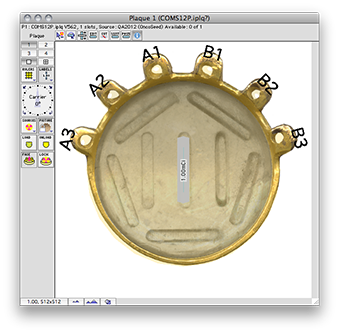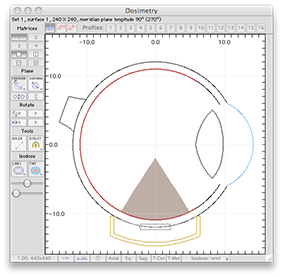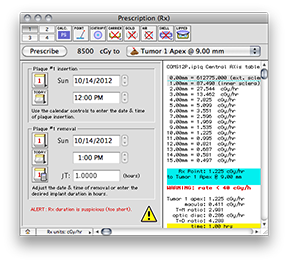
The QA file creates a COMS style plaque with a single model 6711 I-125 source centered on the plaque's Central AXis.
|

Normally, in a COMS plaque, the model 6711 seed center would be inset 1.4 mm from the concave face of the carrier. In this special case, however, the center of the seed is positioned exactly at the surface of the carrier. Because the carrier is in contact with the exterior slcera, the seed is also centered at the exteriors sclera. In this case, the seed is also centered at the base of a 9 mm tall tumor.
Plaque Simulator follows the COMS convention of measuring tumor height from the inner sclera which is assumed to be 1 mm thick, so a prescription (Rx) point at the apex of this tumor will be excatly 10 mm perpendicular to the center of the seed along its central axis.
|

In the Prescription window, the dose calculation algorithm buttons should be set to PS, point source, anisotropy disabled, with carrier, gold, air, shell and slots all disabled. The dose integration (T) time is one hour. The source activity is calibrated to 30 minutes after the implant begins. This simple setup is easily checked against a TG-43 hand calculation.
A dose rate of 1.225 cGy/h should be displayed for both the Rx point and at 10.0 mm in the Central AXis table. This value represents the dose rate constant for TG43U1 model 6711 seeds (0.965) multiplied by the apparent activity to air kerma strength conversion factor (1.27) and the radial dose function g(r) value at 10 mm (1.0). The dose rate constants and radial dose function for each isotope are loaded from the physics files at launch time.
|